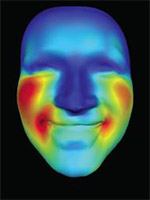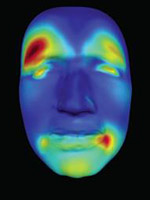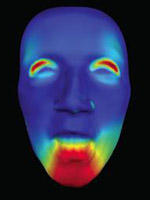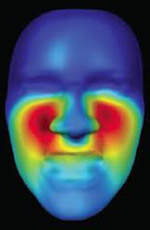Table 6:
Culturally common facial configurations discovered using the reverse correlation method
| Facial Configuration |
AU Description |
Associated Emotion Words – U.K. |
Associated Emotion Words - China |
|---|---|---|---|
 |
6+12+13+14 | delighted, joy, happy, cheerful, contempt, pride | joyful, delighted, happy, glad, feel well, pleasantly surprised, embarrassed, pride |
 |
4+20+24+43 | fear, scared, anxious, upset, miserable, sad, depressed, shame, embarrassed | afraid, anxious, distressed, broken-hearted, sorrow and sadness, having a hard time, grief, dismay, anguish, worry, vexed, unhappy, shame, despise |
 |
2+5+26+27 | ecstatic, excited, surprised, frightened, terrified | amazed, greatly surprised, alarmed and panicky, scared, fear |
 |
7+9+16+22 | hate, disgust, fury, rage, anger | disgusted, bristle with anger, furious, wild wrath, storm of fury, storm of anger, indignant, rage |
Note. Facial configurations extracted using reverse correlation from 62 models of facial configurations. Red coloring indicates stronger AU presence and blue indicates weakest AU presence. Some words and phrases that refer to emotion categories in Chinese are not considered emotion categories in English. Modified from Jack et al. (2016) and reproduced with permission.
